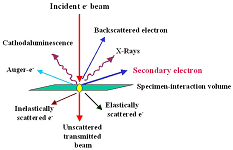
Asia Pacific Academy of Science Pte. Ltd. (APACSCI) specializes in international journal publishing. APACSCI adopts the open access publishing model and provides an important communication bridge for academic groups whose interest fields include engineering, technology, medicine, computer, mathematics, agriculture and forestry, and environment.

Issue release: 31 December 2025
Beekeeping in Honduras represents a significant activity within the livestock sector, facing threats from pests and diseases that hinder its development and productivity. Objective: To determine the parasitic load of Varroa destructor and Vairimorpha (Nosema) spp. in Apis mellifera hives in Tomalá municipality, Lempira department, Honduras, and its association with hygienic behavior, productivity, and the presence of other pests. Materials and methods: The study analyzed 57 hive samples collected from 19 apiaries. The infestation rate of V. destructor was determined. The average infection rate of Vairimorpha spp. was assessed using the Cantwell method. Associations between parasitic loads and productivity, hygienic behavior, and other pests were evaluated through stratified analysis based on the application (or not) of treatment against Varroa spp. Associations were determined using the non-parametric Mann-Whitney U and Kruskal-Wallis tests. Results: Infestation rates for V. destructor were 3.48% in adult bees and 6.82% in larval stages. The use of chemical treatment showed no association with the V. destructor infestation rate in either larvae or adults (p ≥ 0.05). However, the presence of the small hive beetle (SHB) was associated with higher V. destructor infestation in larvae (p < 0.007) within untreated hives. The Vairimorpha spp. infection level was classified as very light, with an average of 5 × 10⁴ spores per sample. The Vairimorpha spp. load showed no association with the variables studied (p ≥ 0.05). Conclusion: The results indicate that varroosis is an important disease in Tomalá municipality, Lempira department, Honduras, associated with hygienic behavior and the presence of SHB in hives. Nosemosis exhibited a very light level of infection.
1.jpg)
Prof. Sivanesan Subramanian
Anna University, India


 Open Access
Open Access



.jpg)
